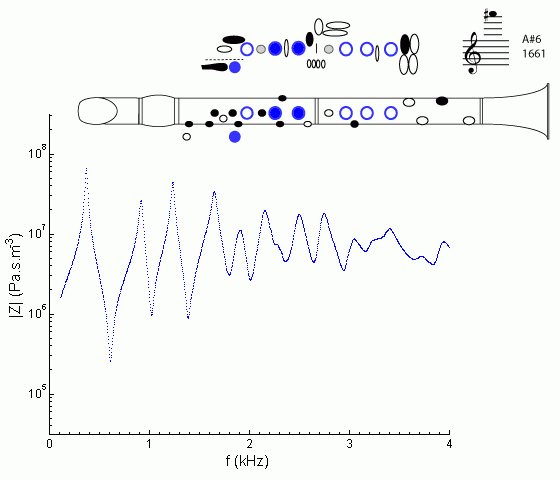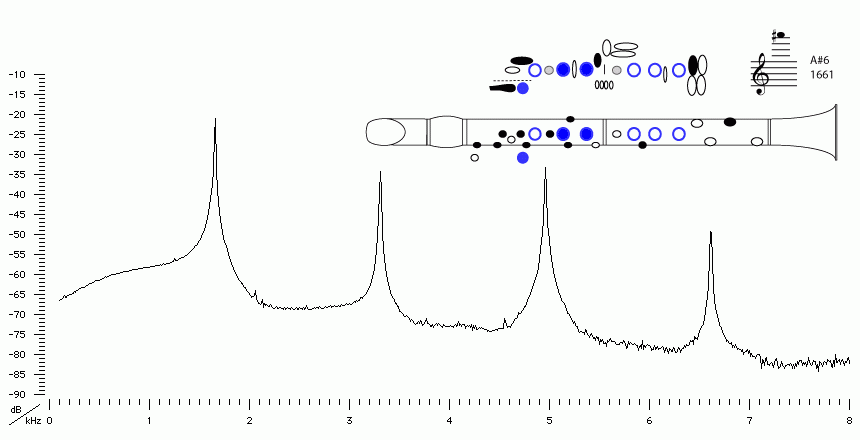| Acoustics of the clarinet |
Bb clarinet |
A#6 |

|
Fingering Acoustic schematic Non-specialist introduction
to acoustic impedance Notes are the written pitch. |
Compare this graph to C5 and F3. The only difference between fingerings is the three open register holes. These not only lower and displace the lower peaks, but they seriously mess up the shape of the curve. We could think of this as a sharp eleventh harmonic of F3 (the eleventh harmonic lies about midway between A6 and A#6 - see the sound spectrum for F3) but we are now so far above the cut-off frequency that such discussions are rather simplistic.

Sound spectrum
of a Bb clarinet
played using fingering for A#6.
For more explanation, see
Introduction to clarinet acoustics
|
Contact:
Joe Wolfe
/ J.Wolfe@unsw.edu.au |